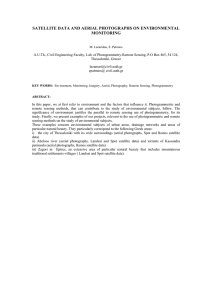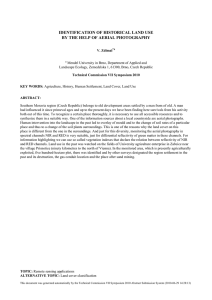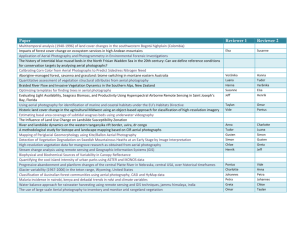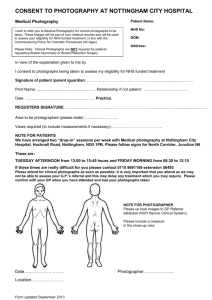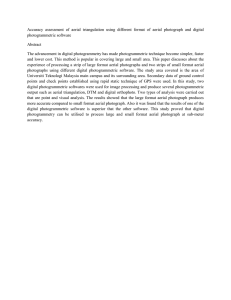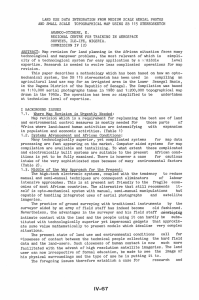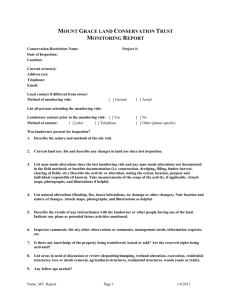Basic Elements of Air Photo Interpretation
advertisement
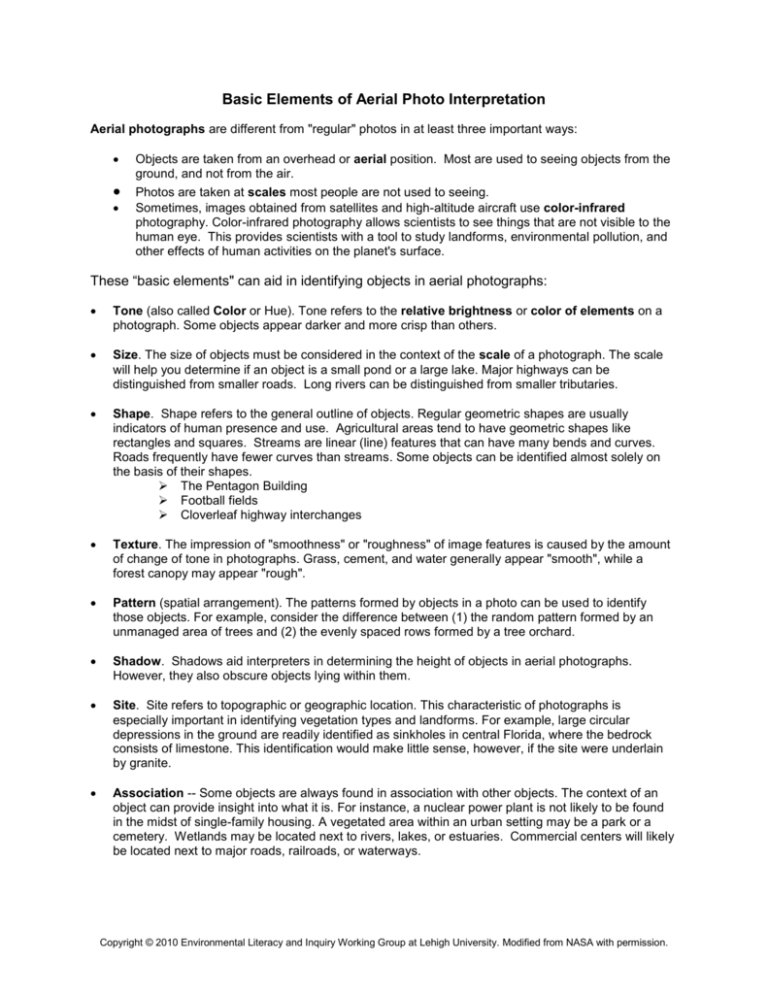
Basic Elements of Aerial Photo Interpretation Aerial photographs are different from "regular" photos in at least three important ways: Objects are taken from an overhead or aerial position. Most are used to seeing objects from the ground, and not from the air. Photos are taken at scales most people are not used to seeing. Sometimes, images obtained from satellites and high-altitude aircraft use color-infrared photography. Color-infrared photography allows scientists to see things that are not visible to the human eye. This provides scientists with a tool to study landforms, environmental pollution, and other effects of human activities on the planet's surface. These “basic elements" can aid in identifying objects in aerial photographs: Tone (also called Color or Hue). Tone refers to the relative brightness or color of elements on a photograph. Some objects appear darker and more crisp than others. Size. The size of objects must be considered in the context of the scale of a photograph. The scale will help you determine if an object is a small pond or a large lake. Major highways can be distinguished from smaller roads. Long rivers can be distinguished from smaller tributaries. Shape. Shape refers to the general outline of objects. Regular geometric shapes are usually indicators of human presence and use. Agricultural areas tend to have geometric shapes like rectangles and squares. Streams are linear (line) features that can have many bends and curves. Roads frequently have fewer curves than streams. Some objects can be identified almost solely on the basis of their shapes. The Pentagon Building Football fields Cloverleaf highway interchanges Texture. The impression of "smoothness" or "roughness" of image features is caused by the amount of change of tone in photographs. Grass, cement, and water generally appear "smooth", while a forest canopy may appear "rough". Pattern (spatial arrangement). The patterns formed by objects in a photo can be used to identify those objects. For example, consider the difference between (1) the random pattern formed by an unmanaged area of trees and (2) the evenly spaced rows formed by a tree orchard. Shadow. Shadows aid interpreters in determining the height of objects in aerial photographs. However, they also obscure objects lying within them. Site. Site refers to topographic or geographic location. This characteristic of photographs is especially important in identifying vegetation types and landforms. For example, large circular depressions in the ground are readily identified as sinkholes in central Florida, where the bedrock consists of limestone. This identification would make little sense, however, if the site were underlain by granite. Association -- Some objects are always found in association with other objects. The context of an object can provide insight into what it is. For instance, a nuclear power plant is not likely to be found in the midst of single-family housing. A vegetated area within an urban setting may be a park or a cemetery. Wetlands may be located next to rivers, lakes, or estuaries. Commercial centers will likely be located next to major roads, railroads, or waterways. Copyright © 2010 Environmental Literacy and Inquiry Working Group at Lehigh University. Modified from NASA with permission.



